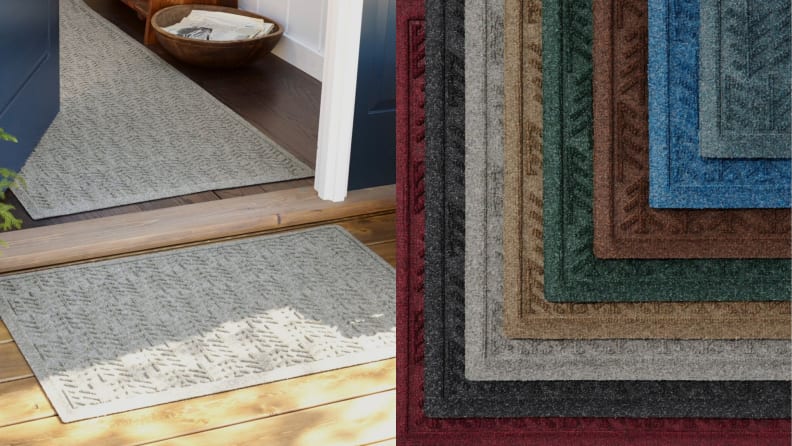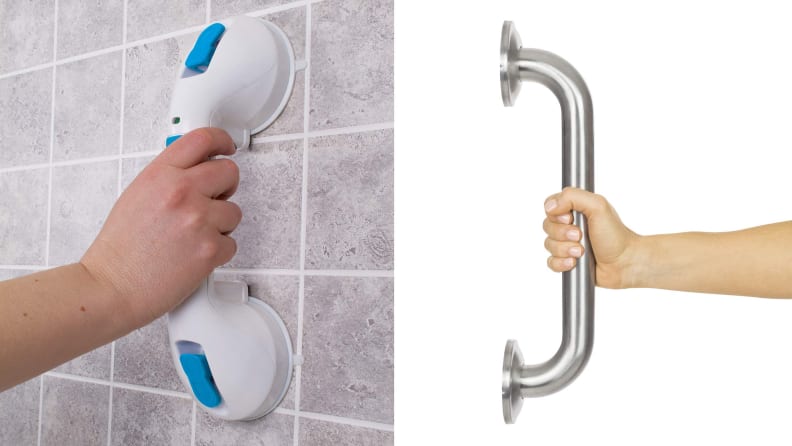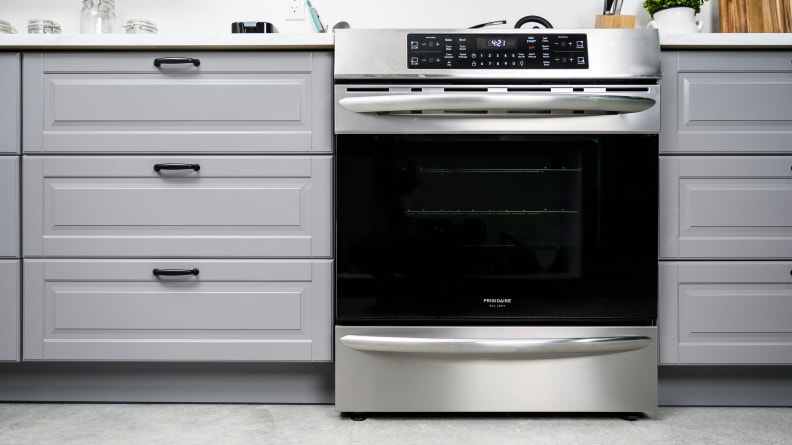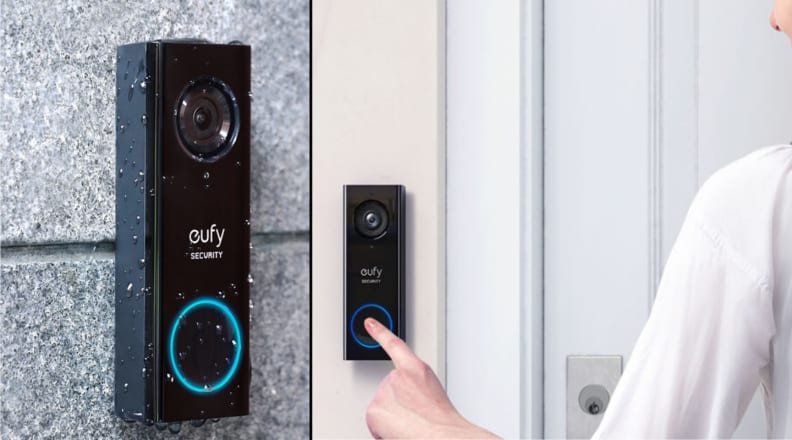7 precautions you can take to make a home safer for aging loved ones
From safer ovens to water temperature controls
Products are chosen independently by our editors. Purchases made through our links may earn us a commission.
A 2018 survey by AARP found that 76% of adults 50 and older would prefer to stay in their homes as they age. Many seniors, however, don’t realize the dangers that lurk in their home until it’s too late.
According to Tammy Kaplan, owner and principal designer at Images in Design, of Cranford, New Jersey, “The most common safety issue I see when designing for seniors is acknowledging that safety is now something they need to think about. How they function now has changed without their realizing it until something happens.”
Whether you’re remodeling your home for yourself in years to come, or for family members who are aging now, consider these proactive steps to make your home safer.
1. Install non-slip flooring

Avoid tripping with non-slip flooring and rugs.
Ellen Farber, president of Ellen Farber Strategic Design, a Philadelphia-based interior design and consulting firm, says, “Falling is the number one concern when designing for seniors.” It is by far the primary cause of injuries in the elderly.
When planning a safe home, start with the flooring. Clear the floor of clutter as well as hall rugs, area rugs, and small throw rugs. In the kitchen, bath, and entryways, place rubber or vinyl mats that won’t curl up at the edges and have non-slip backing.
You should also consider replacing the flooring altogether.
Farber recommends using a single material in multiple rooms to eliminate thresholds. She prefers a luxury vinyl such as COREtec, which she says “looks like real wood, is waterproof, has a high slip-resistance factor, is easy to clean and can be used in any room in the house.” In addition, COREtec is reasonably priced and works well with many different design styles.
Hardwood floors are also a good choice, she says, but require more general maintenance and care.
2. Make stairs safe
Falling down stairs can potentially be more dangerous than tripping on a rug.
If stairs have runners, the carpeting should have a low pile. Or, instead of runners, you can use stair treads, which are individual pads that go on each step. They come in a variety of patterns and materials, from wool to vinyl, and are either nailed into the steps or have a non-slip backing. Make sure you select the one that works best for your needs.
If the stairs are not carpeted, Farber suggests adding a contrasting strip on the edge of each step to differentiate one from another. There are many tapes available in reflective material to help see in the dark. This is also a great idea for outdoor steps.
Lucy Greco, an “accessibility evangelist” at University of California at Berkeley, recommends adding a colorful, low-pile, non-slip rug at the top and bottom of the stairs as a way to tell that you are approaching the steps. This provides not only a visual but also a tactical contrast for the visually impaired.
Good, overhead lighting is vital in indoor stairwells. Install switches at the top and bottom of the stairs. Farber notes that installing electrical outlets at the top and bottom is also a good way to plan for the future if one day you need to install a chair lift.
On both sides of the stairs, install sturdy handrails that extend the length of the stairwell.
3. Install grab bars in the bathroom and elsewhere as needed

Having something to grab onto in the shower is vital.
Grab bars are essential to bathroom safety and should be installed at the entrance to and inside the bath and shower, as well as around the toilet seat.
Traditional grab bars work just fine but for some people are too utilitarian in appearance.
Never fear, says Kaplan, “You can live safely and in style in your bathroom.”
There are countless decorative grab bars in various shapes, designs and materials that not only provide security, but also enhance the décor. Many also do double duty as toilet paper holders, towel racks, bath caddies, and more.
Greco notes that in homes where multiple generations reside, you may want to consider installing removable grab bars or grab bars that flip up and down so they can be moved out of the way when they’re not needed.
Think beyond the bathroom when it comes to grab bars. The front door, on the front porch or the back steps, at the top and bottom of the stairs, in the garage—wherever there is the chance of falling or where someone needs help getting up and down—are ideal places.
Farber says, “The critical thing to remember with grab bars for residential interiors is that they should be placed precisely at the locations needed by the person in the home, without regard to ADA or other considerations; it’s a personal safety preference.”
4. Control water temperature

With the press of a button, the Hansgrohe ShowerSelect can switch between the hand-held and shower head, and it automatically limits temperature.
To avoid scalds in the shower, it’s important that the water temperature be monitored.
The first step is to make sure your main water heater is never set above 120°F.
Next, install a thermostatic valve in your shower. This type of valve maintains a constant temperature by adjusting to changes in water pressure. It is particularly good for those who want the option of both a static shower head and a handheld shower head because you can switch from one to the other without fear of the temperature changing.
Farber is a fan of the Hansgrohe ShowerSelect. As she describes it, “With the press of a button, it switches functions between the hand-held and shower head, and it automatically limits temperature to a preset amount of 100—no confusing knobs or dials to turn.”
5. Use LED light bulbs and set up automatic lighting

Navigate in the dark with a path of motion-sensitive lights.
Proper and ample lighting is essential to ensuring a safe home. LED light bulbs are preferred, because they are durable, energy-efficient, and offer the best quality light. In general, the brighter the light the better.
Farber suggests creating a comfortable atmosphere by selecting softer colors.
Kaplan recommends using a LED lighting color temperature of at least 3000K.
Greco notes that full-spectrum lighting not only provides safety, but it can also be vital to mental health during winter or in places where it rains often.
Farber explains that recessed lighting offers both safety and functionality, eliminating the need for cords, which present a tripping hazard.
By using smart bulbs or timers, setting lights to turn on and off automatically is also a good idea. Same goes for motion-activated lights, indoors and out, and motion-sensitive night lights, which can be mounted along the pathway between the bedroom and the bathroom.
6. Choose the right oven

The Frigidaire Gallery FGIH3047VF is the best induction range we've tested.
There are many factors to take into account when selecting an oven for an older person.
To avoid having to reach over the stovetop to turn the appliance on and off, buy an oven that has dials on the front panel rather than the back of the stovetop.
Dials and buttons should be brightly colored or backlit. Greco prefers an oven with large, easy-to-find buttons or dials rather than the push-panel type. For this reason, she favors commercial ovens or ranges, which usually have very simple, easy-to-use controls, which is especially helpful for the visually impaired.
Farber says that electric cooktops, like the best one we’ve tested, the Electrolux EI30EF45QS, are considered safer than gas, and they include a light that indicates that the surface is hot.
Induction cooktops, like the Frigidaire Gallery FGIH3047VF, which is the best one we’ve ever tested, are even safer because the surface doesn’t get too hot to the touch. However, Farber notes, “They are more expensive, require special pans, and could be more confusing to seniors who aren’t familiar with new technology.”
Another thing to note is that bending over an open oven door can be hazardous and result in a fall.
Kaplan’s favorite appliance is the double-oven, 5-burner, 30-inch model range, which has a smaller upper oven in addition to the larger lower oven. “The majority of daily cooking can be done in the small oven, which requires no bending,” she says.
For Farber, the most important feature of an oven is its location, which for an oven is a wall. She also recommends an oven with side-swing doors, which require no bending over and are easier to access than ovens with pull-out racks.
In April, GE Café Series is launching a modern-looking smart, built-in convection double-wall oven (CTD90DM model) that offers a few elements that older people may find useful: hand’s-free technology. Not only can you nudge the oven with your elbow to open it, but you can ask Alexa to do it for you.
For Greco, “Using a controlled appliance is a lot safer than putting a pot on the stove.” For this reason, she likes using microwaves, air fryers, Instant Pot, and similar devices. The advantage to these is that you set a timer to cook so you don’t have to worry about leaving the stove on, which is especially good for someone who is forgetful.
In the end, you want to pick the oven that works best for your needs.
7. Install a smart doorbell

The Eufy Security Doorbell includes free local storage and 2K resolution, so you can always see who is at your door.
One of the best ways to feel safer at home is to install a smart doorbell. There are numerous models on the market with a wide variety of options.
A doorbell that comes with an intercom and a motion-activated camera is a good way to verify who is outside.
For the hard-of-hearing, there are systems that come with flashing lights to indicate someone is at your door. If you are still working or traveling or otherwise away from home, or have mobility issues, a doorbell with remote access via your smartphone can let you answer the door and monitor who is there even when you are away.


